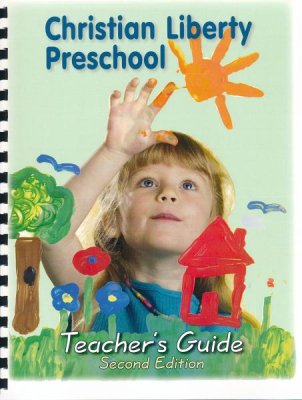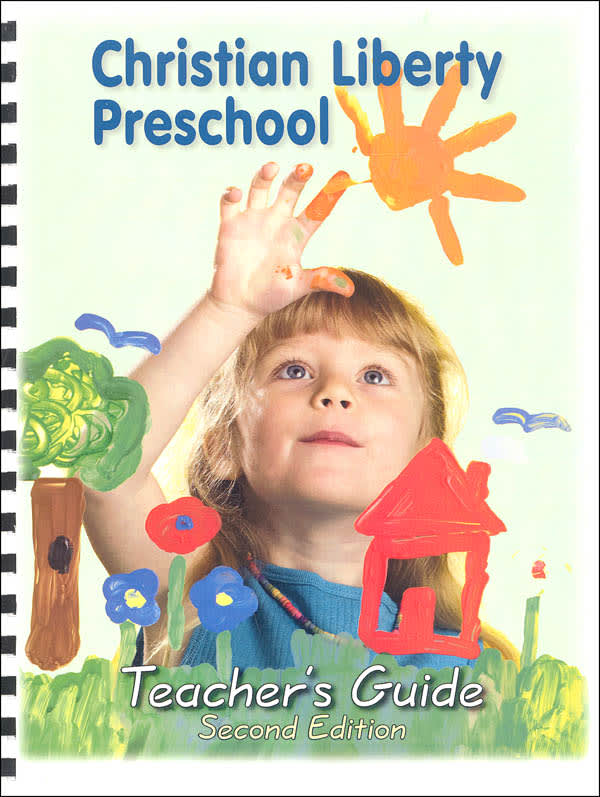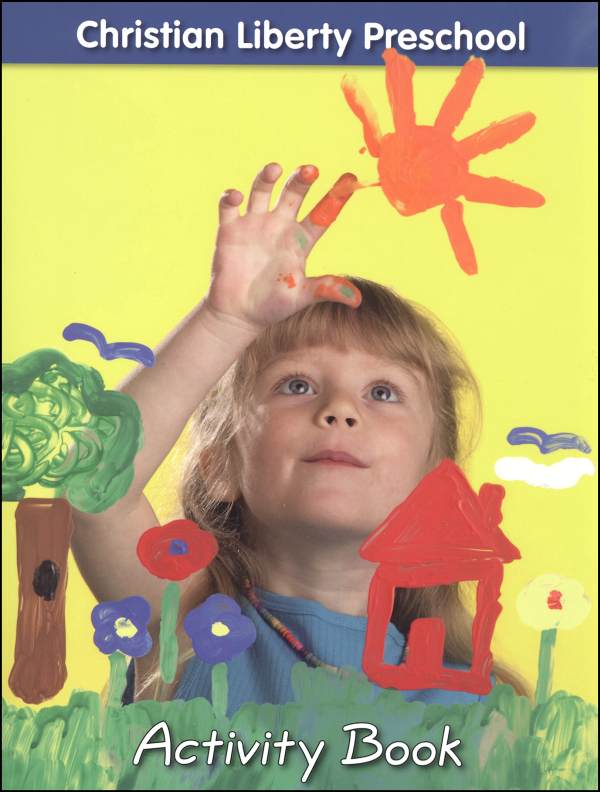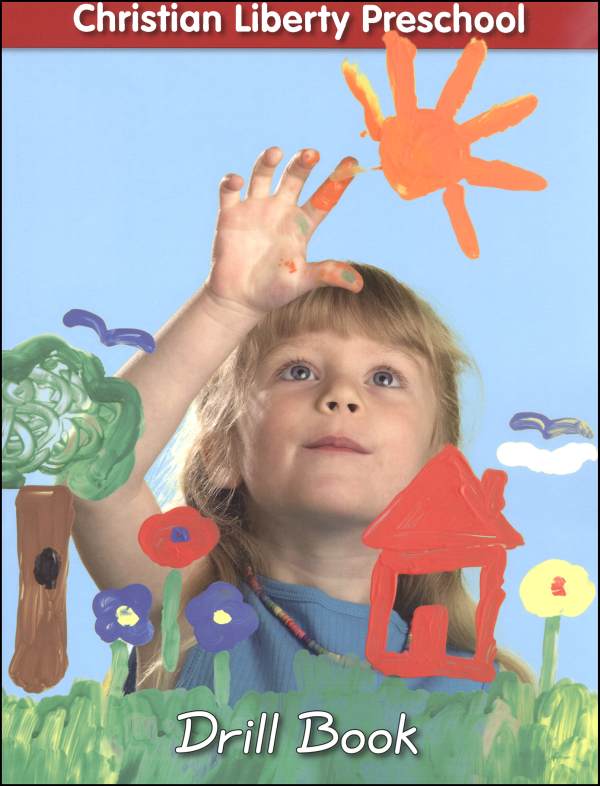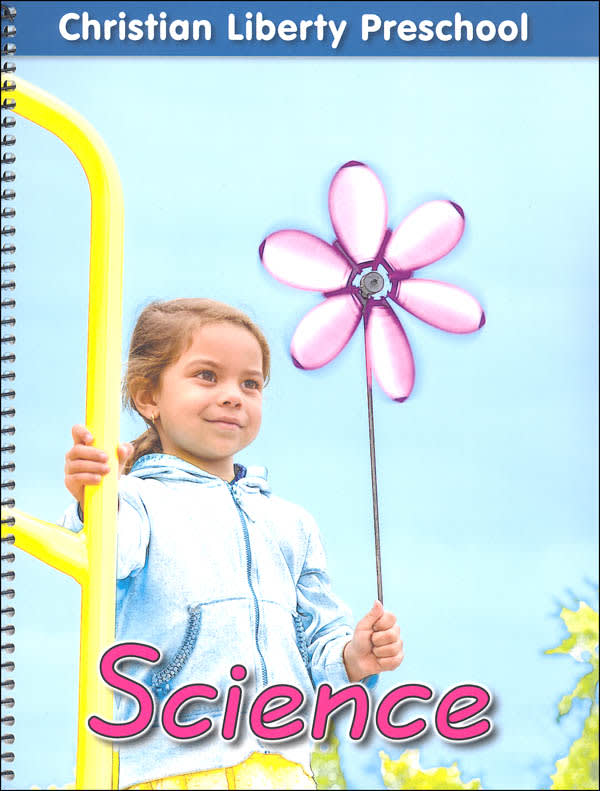Christian Liberty Press (CLP) has developed a complete preschool program suitable for both classrooms and homeschools. Homeschoolers will probably adapt or skip some craft activities, but almost everything else will work equally well in both classroom and home settings.
The Christian Liberty Preschool Teacher’s Guide, Second Edition ties everything together. The complete kit includes the guide along with the Christian Liberty Preschool Activity Book, the Christian Liberty Preschool Drill Book, Bible Nuggets from A to Z, My ABC Bible Verses, a set of five CLP phonics readers, Trottino’s Tale, Christian Liberty Preschool Science, and the CLASS Lesson Planner.
The Preschool Teacher’s Guide briefly explains how the program works. It then presents weekly lesson plans for 34 weeks with different themes providing connections between activities. The weekly plans list what should be done for the various parts of the school day (e.g., activity time, snack time, Bible time, etc.). Specific pages to be used, instructions, and occasional weblinks are included here for all resources except the Preschool Activity Book. On page 25 of the Preschool Teacher’s Guide are more detailed lesson plans for the pages of the Preschool Activity Book. This is where children work on academic skills such as colors, shapes, letters, numbers, counting, matching, beginning phonics, patterns, sequences, and other basic skills. The Preschool Drill Book reinforces the most important of these skills. If a preschooler is not yet ready for handwriting, you might use few or none of the pages from the Drill Book while with other students you might use some or all of them.
The program is traditional in its approach and features a significant amount of Christian content. Themes are followed for each week with a few exceptions at the beginning and end of the year. For example, the primary theme for Week 18 is “On the Farm,” and the letter o and the number 2 are also taught. The lesson plans suggest a visit to a farm if possible. Children should learn the song and game for “Farmer in the Dell” and the song “Old McDonald Had a Farm.” For crafts, children will make a sheep (for the farm theme) and an octopus (because it starts with o). Snack time should include easily identifiable farm products (e.g., dairy products) and foods that begin with the letter o. The Bible story for the week is “The Lost Sheep.” Children will also memorize and recite a weekly Bible verse. Pages in the Preschool Activity Book teach the letter o and the number 2 as well as other skills unrelated to the themes. Science lessons, generally taught one day per week, tie in with the letter taught that week and include hands-on activities. Science lessons have a heavy religious component, using science experiments or observations to teach spiritual truths. Phonics readers are used at the end of the course. They are to be used primarily as read-aloud books but also for children to try sounding out words highlighted in each reader.
While the program introduces academic skills, parents and teachers are encouraged by the authors to be sensitive to the developmental needs of each child. This program straddles the line between the extremes for preschool programs that either avoid academic skills altogether or expect preschoolers to function at kindergarten level. While it does introduce reading and writing skills, it does so gently and allows for flexibility.




